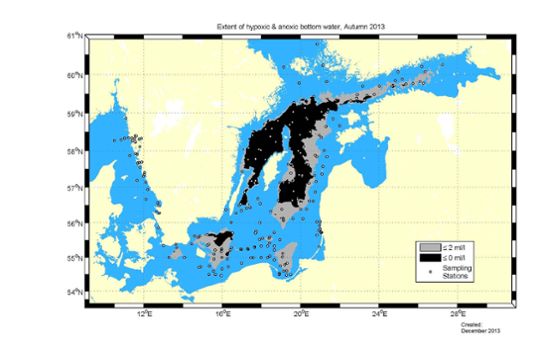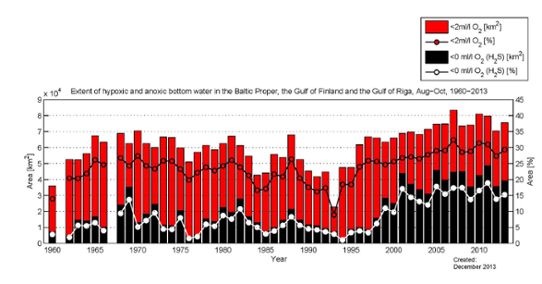Sad development
SMHI have analyzed the oxygen situation in the Baltic Sea during the period 1960 to today. Up to 1999 the oxygen conditions varied largely and both bad and good conditions were found. But after 1999 the extent of areas with total absence of oxygen has increased and is now on a constant elevated level.
The inflows to the Baltic, that can improve the oxygen conditions, has only temporarily improved the situation in the southern Baltic. No inflows have been strong enough to reach and improve the oxygen concentrations in the big deep areas around Gotland.
The cause and ecosystem effects of the oxygen situation after 1999 in the Baltic Sea that has been recognized, with continuously extreme oxygen conditions, are still not fully understood. However, there are several likely contributory and concurrent causes to the recent development such as changes in winds, changes in frequency and characteristics of inflows, increased loading of organic matter to the deep water, altered vertical mixing and stratification, and changed freshwater runoff.
Data exchange between countries around the Baltic Sea
The SMHI oxygen survey was performed in cooperation with the Swedish Agricultural University during the international survey on fish stocks in the Baltic Sea. Water samples were taken during the cruise and totally 60 stations were sampled and about 200 oxygen samples were analyzed. At each sampling station a profiling instrument was used that measure oxygen continuously between the surface and the ocean floor.
All countries around the Baltic participate in these surveys and data are exchanged to create a dataset that covers almost all sea areas. Finland, Estonia, Latvia, Lithuania and Poland have contributed with data. In the analysis of the oxygen condition during autumn 2013, some national and regional monitoring data has also been included.

